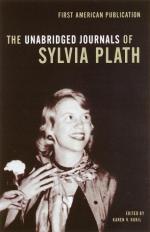|
This section contains 1,920 words (approx. 7 pages at 300 words per page) |

|
More successfully than any other recent American poet, Sylvia Plath dramatized those moments of crisis during which the self must choose between life and death. By using intensely personal material, she gave concrete form to an action involving violent self-transformation and initiatory change. Yet it is unfortunate that her poems, which embody a coherent and self-sufficient action, have been understood almost exclusively as confessional documents. (p. 21)
Instead of looking at the lyrics in Ariel and Winter Trees as confessional outpourings of self-pity and grief, we can see that they play out the dramatic conflict between opposed external forces on the field of the poet's body and self. Life and death operate in Plath's poetic world as tangible powers: they appear as dramatic agents embodied in people, trees, houses, colors, and animals. And they proceed to control the self's actions and desires, its present and its future…. The poetry...
|
This section contains 1,920 words (approx. 7 pages at 300 words per page) |

|


